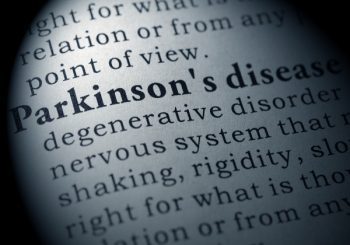 By Sayer Ji
By Sayer Ji
Contributing writer for Wake Up World
Could gluten’s toxicity extend to the nervous system, producing symptoms identical to classical Parkinson’s disease? A remarkable case study adds to a growing body of research indicating that wheat’s neurotoxicity is greatly underestimated.
A remarkable case report describing the dramatic recovery of a 75-year-old Parkinson’s disease patient after following a 3-month long gluten free diet reveals the need to explore whether there is an increased prevalence of silent or symptomatic celiac disease or non-celiac gluten sensitivity both in those afflicted with Parkinson’s disease and the related multi-factorial neurodegenerative condition known as Parkinsonism.
[pro_ad_display_adzone id=”110028″]
Published in the Journal of Neurology, the report notes that celiac disease often manifests with only neurological symptoms, even in advanced age. This may strike the reader as surprising, considering gastrointestinal complaints are the most commonly noticeable symptom; and yet, when the voluminous published literature on gluten related adverse health effects is taken into account, so-called ‘out of intestine’ expressions of intolerance to gluten-containing grains are far more common than gut-related ones, with no less than 200 distinct adverse health effects implicated. You can read our summary of the biological carnage exacted by this ‘king of grains’ here: Wheat: 200 Clinically Confirmed Reasons Not To Eat It. You will notice that harm to the brain figures high on the list. From schizophrenia to mania, autism to peripheral neuropathy, the central nervous system is particularly sensitive to its adverse effects.
There are a wide range of mechanisms driving gluten associated neurotoxicity, such as:
- Gluten Acts Like A ‘Brain Drug’: The presence of pharmacologically active opioid peptides in wheat including four gluten exorphins and gliadorphin, and another is gluten’s ability to restrict blood flow to the frontal cortex. Read More: “Do Hidden Opiates In Our Food Explain Food Addictions?“
- ‘Gluten Brain’ Autoimmunity: Plenty of research now indicates that in susceptible individuals wheat adversely affects the gut-brain axis, increases intestinal permeability, and ultimately leads to the immune system misidentifying self-structures within the brain or neurological tissue as “other,” causing the host immune system to attack its own nervous system. Read More: “2 Popular Foods May Turn the Immune Against the Brain.”
- Wheat’s “Invisible Thorns” Affect The Brain: The defensive carbohydrate-binding protein in wheat known as wheat germ agglutinin (WGA), also know as “wheat lectin,” has been found to cross the blood-brain-barrier and can interfere with neurological function in a number of ways. Read more: “Opening Pandora’s Bread Box: The Critical Role of Wheat Lectin in Human Disease.”
- Grains Metabolically Impair the Brain: The larger context is that grains provide an inappropriate or suboptimal set of nutrients for brain metabolism. Dr. David Perlmutter in his NY Times bestselling book Grain Brain links cognitive impairments endemic to older populations in Western cultures to the over consumption of carbohydrates (from grains and sugar), and the under consumption of fats.
You can also read Dr. Kelly Brogan’s article “This Is Your Body (and Brain) on Gluten” to get greater perspective on the topic.
Considering these factors, it is not surprising that gluten removal from the diet could result in what the title of the published case report described as a “Dramatic improvement of parkinsonian symptoms after gluten-free diet introduction in a patient with silent celiac disease.” We’ve seen similar remarkable recoveries with brain-metabolism optimizing fats like coconut oil in cases of debilitating dementia, including Alzheimer’s disease.
In this new case study, the 75-year-old man presented with a 1-year history of “difficulty walking, instability, and fatigability.” His neurological examination revealed:
- Facial hypomimia (reduced facial expressions)
- Bradykinesia (extreme slowness of movements and reflexes)
- Rigidity
- Postural instability
A brain scan was performed using Single-photon emission computed tomography (SPECT), revealing abnormalities consistent with low dopamine production and which in combination with the clinical data lead to a diagnosis of Parkinson’s disease. Additional laboratory blood work revealed lower than normal level of serum folate, elevated homocysteine, with normal vitamin B12 levels. To assess the possibility of asymptomatic malabsorption due to a silent celiac disease further blood screening was explored. Anti-gliadin antibodies, markedly elevated IgA, anti-transglutaminase antibodies, and positive anti-endomysial antibodies – all signs of gluten associated autoimmunity. Finally, a duodenal biopsy was performed revealing intestinal characteristics (flattened villi; crypt hyperplasia) consistent with celiac disease. As a result, the gastroenterologist prescribed a gluten-free diet.
Remarkably, after only 3 months of abstinence from gluten, the patient reported an almost complete remission of symptoms, subsequently confirmed by a neurological evaluation. 18 months later he was reexamined and was found to have improved further.
Notably, the patient did not see measurable improvements in the dopaminergic abnormalities discovered in his brain scan, which would be expected in classical Parkinson’s disease, which is marked by the degeneration of the dopamine producing cells in the substantia nigra of the brain. The authors therefore did not posit that the celiac disease “caused” Parkinson’s disease in the patient, but rather that celiac disease exacerbated parkinsonism in this case. The case, however, does illustrate the possibility that a number of patients diagnosed with Parkinson’s disease are suffering from previously unidentified and unreported gluten-associated Parkinsonism, which from the outside clinical presentation can look identical. Those folks, who would benefit greatly from removing the cause of the neurological problems – namely, gluten/wheat removal – are often overdiagnosed and overtreated with drugs aimed at alleviating Parkinson’s disease, but which ultimately can lead to accelerated degeneration of endogenous dopamine production in the brain, enhanced neurotoxicity due to drug metabolites (e.g. 6-hydroxydopamine), and the production of dyskinesias (movement disorders) that are far worse than, or were never present within, the pre-treatment condition.
For additional research related to natural interventions for Parkinson’s disease, use our database: Parkinson’s Disease Research. Also, our section on neurodegenerative diseases provides additional help: Neurodegenerative Disease Research.
Article sources:
- Vincenzo Di Lazzaro, Fioravante Capone, Giovanni Cammarota, Daniela Di Giuda, Federico Ranieri. Dramatic improvement of parkinsonian symptoms after gluten-free diet introduction in a patient with silent celiac disease. J Neurol. 2014 Feb ;261(2):443-5. Epub 2014 Jan 25. PMID: 24464413
Recommended articles by Sayer Ji:
- Turmeric’s Weight Loss Secret – It Turns Bad Fat Good
- Brain Regeneration: Why It’s Real and How To Do It
- Research: Garlic is an Effective Natural Treatment for Heart Disease
- Wi-Fi Devices Increase Mercury Release From Dental Amalgams
- Mammography Is Harmful and Should Be Abandoned, Scientific Review Concludes
- “Killer Germs” Obliterated by Medicinal Smoke Smudging, Study Reveals
- Turmeric’s ‘Smart Kill’ Properties Put Chemo & Radiation To Shame
- Beet Juice Boosts Cognitive Function In One Dose
- The Amazing Healing Properties of Apples
- 6 Bodily Tissues That Can Be Regenerated Through Nutrition
- How to Clean Your Arteries With One Simple Fruit
About the author:
Sayer Ji is the founder of Greenmedinfo.com, a reviewer at the International Journal of Human Nutrition and Functional Medicine, Co-founder and CEO of Systome Biomed, Vice Chairman of the Board of the National Health Federation, and Steering Committee Member of the Global Non-GMO Foundation.
For more, visit GreenMedInfo.com and Facebook.com/GreenMedInfo, or sign up for GreenMedInfo’s free e-Newsletter.
© January 31st, 2019 GreenMedInfo LLC. This work is reproduced and distributed with the permission of GreenMedInfo LLC. Want to learn more from GreenMedInfo? Sign up for their newsletter here.
[pro_ad_display_adzone id=”110027″]







